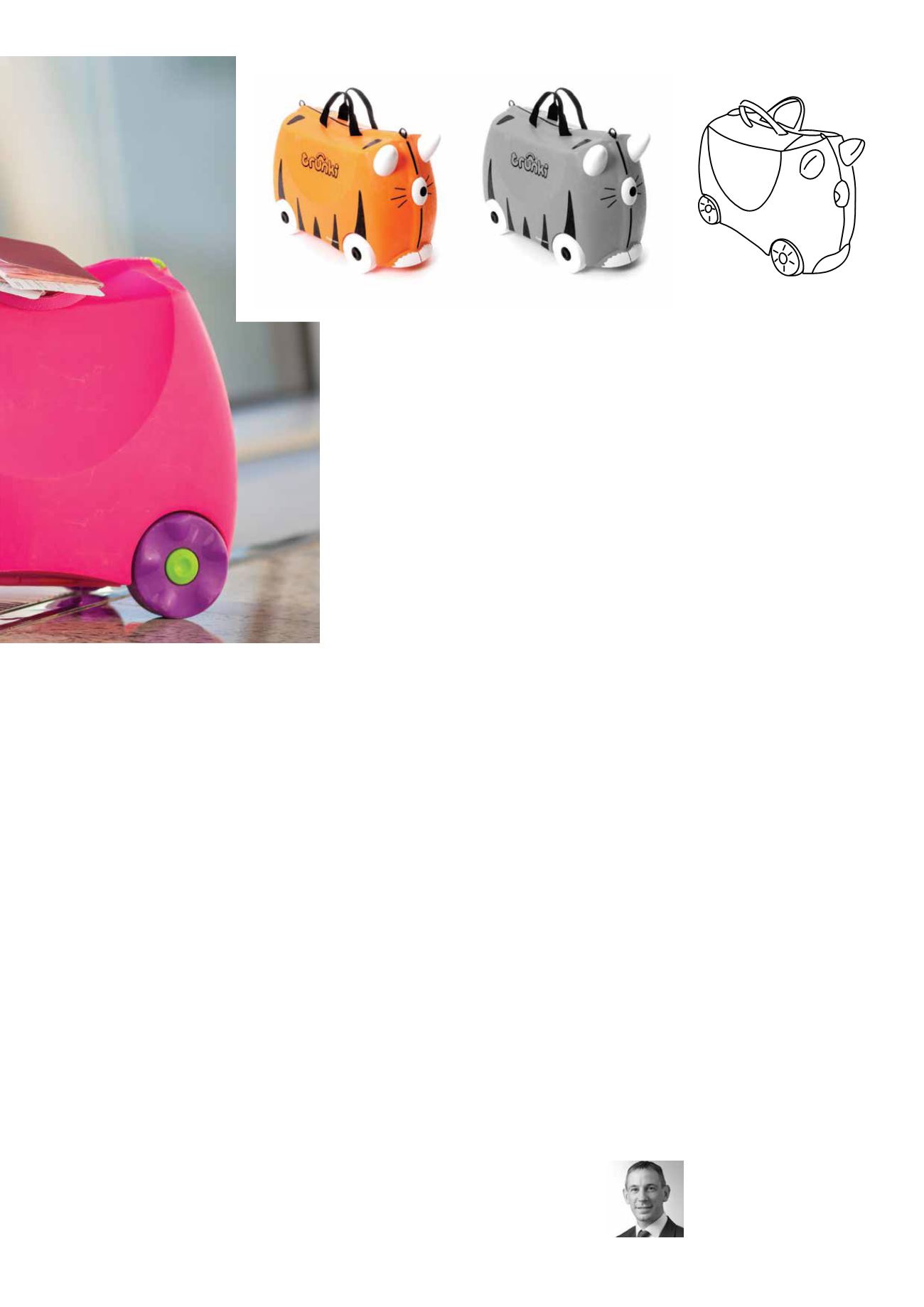
It might at first sight seem strange that, in
the absence of any similar product in the
market and the many similarities between
the designs, the question of infringement
should depend on these two quite specific
design details. However, at the heart of
the decision by the Supreme Court is the
question of choice. Given the freedom that
an applicant has to decide how to represent
a design, the Supreme Court felt that it
was reasonable to interpret the scope of
protection in light of the choices made by
the applicant in representing its design.
This decision of the Court of Appeal raised
two important points of law concerning how
surface ornamentation and colour contrast
should be interpreted in a CRD, hence
Magmatic’s further appeal to the
Supreme Court.
On the surface ornamentation point,
Magmatic argued that since the CRDwas
absent of any surface ornamentation, the
surface ornamentation on the Kiddee Case
should be ignored in the assessment of
infringement, and asked of the Supreme
Court whether absence of decoration can in
principle be a feature of a design, andwhether
it was a feature of this particular design.
The Supreme Court has confirmed that
the absence of decoration can indeed be
a feature of a design, and commented
that it would be curious if this were not the
case so that elegantly simple designs can
be adequately protected. In relation to this
particular CRD though, the Supreme Court
concluded it was not necessary to decide
if absence of ornamentation was indeed a
feature of the CRD.
On the colour contrast point, the Supreme
Court confirmed that the Court of Appeal
was correct to interpret the scope of the
CRD as being limited to the contrasting
colours of the wheels and strap. The
Supreme Court also confirmed that black
and white (monochrome) representations
of a design cover all colours.
From a practical standpoint the Supreme
Court gave the guidance that whilst
each CRD must be interpreted in its own
context, a line drawing is much more
likely to be interpreted as not excluding
ornamentation than a CAD image. Whereas
a line drawing shows only shape, a CAD
drawing with surface rendering will often
show not only shape but also some
surface ornamentation. A photograph on
the other hand will show shape, surface
ornamentation, and possibly the product
materials as well.
The design registration system in Europe
provides enormous flexibility and the
applicant can select one or more of
these different image types for its design
representations.
The sympathy with which the Supreme
Court handed down its decision to
Magmatic is apparent but in order to
provide legal certainty it had to evaluate the
CRD based on Magmatic’s choice of how to
represent the design of the Trunki product.
It seems likely that with a line drawing or a
photograph (colour or greyscale) Magmatic
would have fared much better in this
dispute.
A photograph of the ‘Tipu Tiger’ Trunki,
for example, as shown above could never
have led to a conclusion that the design
protection was for a ride-on suitcase that
looked like a ‘horned animal’. A line drawing
would not have led to the conclusion that
contrasting colour wheels and strap were
important design features.
Magmatic was successful in enforcing
its unregistered design rights, so it is
reasonable to question the value of
registering designs if they are going to
be construed so narrowly. Put simply,
the duration of protection for registered
designs is much longer (up to 25 years in
Europe), compared to just 3 years in Europe
or 5-10 years in the UK for unregistered
designs. The shorter duration unregistered
design right was not long enough for
Magmatic to keep PMS off its turf. However
when taking advantage of the longer term
of protection offered by registered designs
it will often be the case that a single design
registration provides insufficient scope
of protection, and professional advice on
scoping out the design registration should
be sought.
The European Union Intellectual Property
Office (EU IPO) offers significant fee
reductions where multiple designs are
registered at the same time and applicants
should use this to their advantage and
protect multiple different design variants,
possibly using different image types, to
achieve the broadest scope of protection
for their product.
To find out more
contact Richard Worthington
Colour photograph
Greyscale photograph
Line drawing
13


